Pâte Sucrée (Sweet Tart Dough)
This post may contain affiliate links. Read my full disclosure policy.
A pâte sucrée is a crisp yet tender pastry crust that is slightly sweet. It maintains its shortbread-like texture when chilled, which makes it ideal for tarts that require refrigeration.
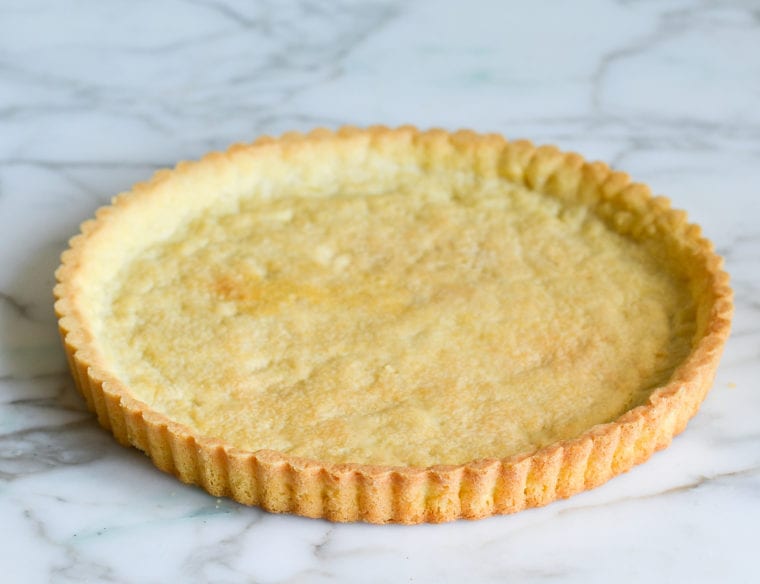
Enriched with egg yolk, butter, and sugar, pâte sucrée is a crisp yet tender pastry crust that is slightly sweet. (In French, pâte means dough and sucrée means sweet.) The dough maintains its shortbread-like texture even when chilled, which makes it ideal for tarts that require refrigeration, like a classic French fruit tart.
Pâte sucrée dough is typically rolled out using a rolling pin, but since it’s very prone to tearing, I find it easier to simply press the pastry into the bottom and up the sides of the pan; there’s also less risk of overworking the dough this way.
This recipe makes enough dough for one 9.5 x 1-inch high fluted tart pan with a removable bottom or a 9-inch pie shell. Feel free to double the recipe and freeze half for another time; it keeps well in the freezer for up to 3 months.
Table of Contents
What You’ll Need To Make Pâte Sucrée (Sweet Tart Dough)
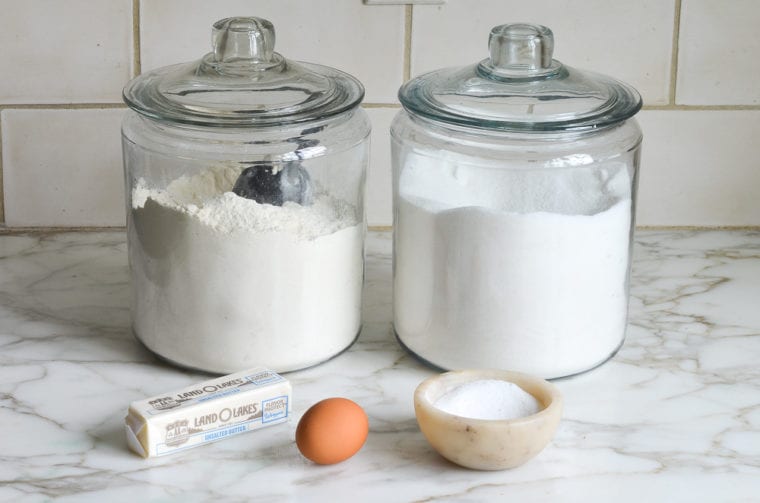
Step-By-Step Instructions
In a stand mixer fitted with a paddle attachment, combine the butter, sugar, and salt.
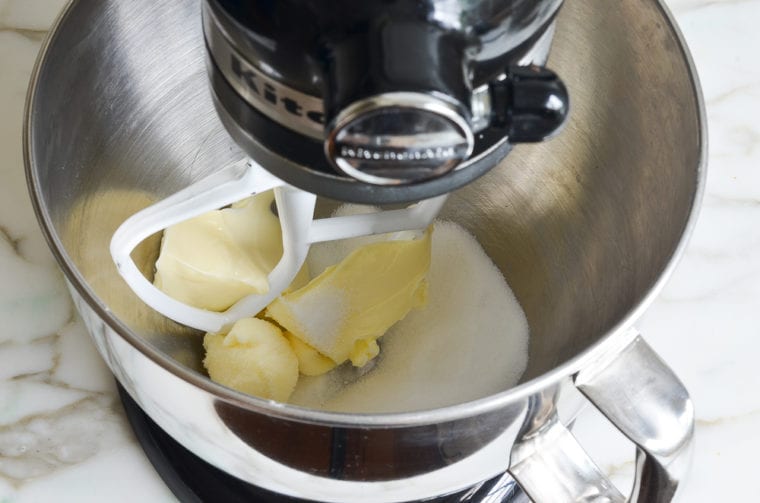
Beat on medium speed until pale and creamy, about 2 minutes. Scrape down the sides and bottom of the bowl with a rubber spatula and add the flour.
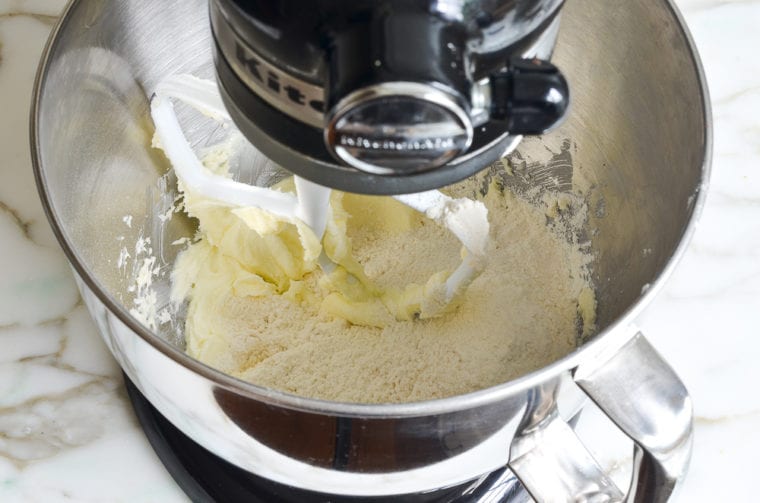
Mix on low speed for about 30 seconds, until the flour is incorporated, and then add the egg yolk.
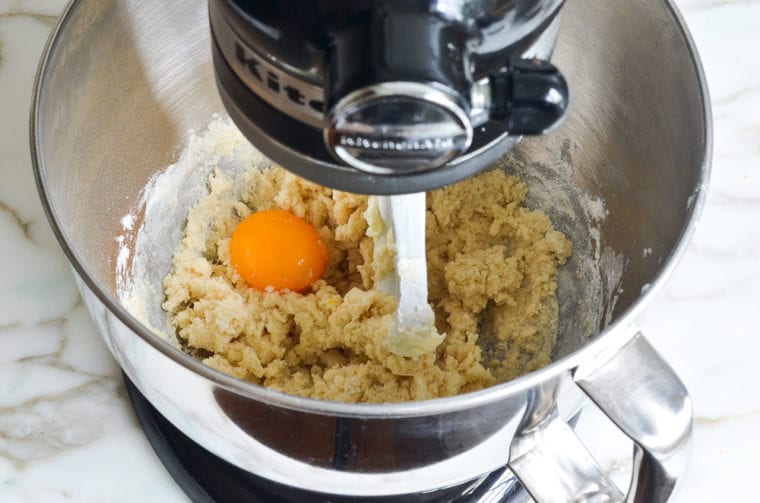
Mix on low speed until the yolk is evenly incorporated and the dough is clumpy, about 30 seconds.
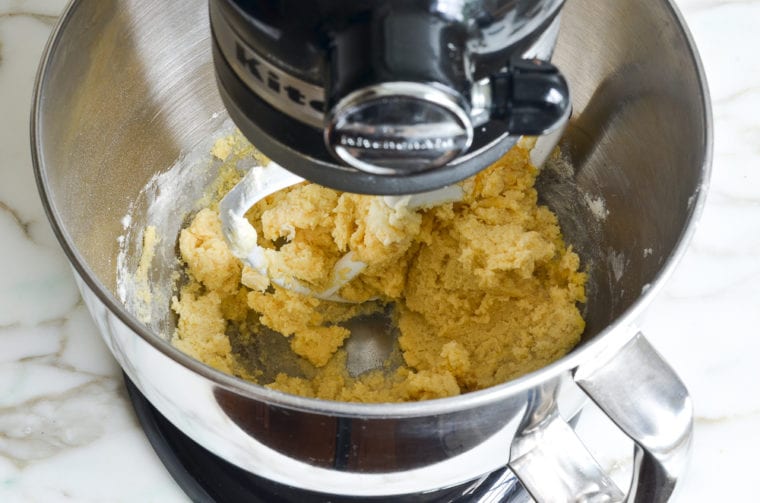
Using your hand, lightly knead the dough into a ball inside the bowl.
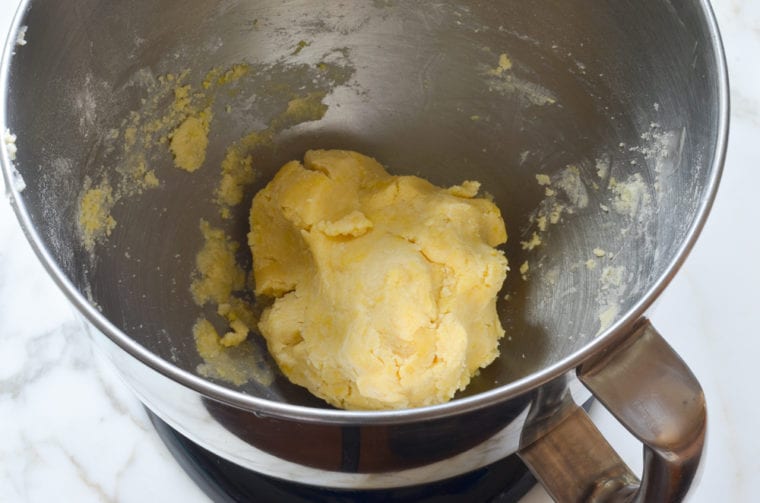
Remove the dough from the bowl, press it into a 6-inch disk, wrap it tightly in plastic wrap, and let it rest in the refrigerator for about 30 minutes. (The dough can be tightly wrapped in plastic and stored in the refrigerator for up to 5 days or in the freezer for up to 3 months. If frozen, thaw it in the refrigerator overnight before using.)
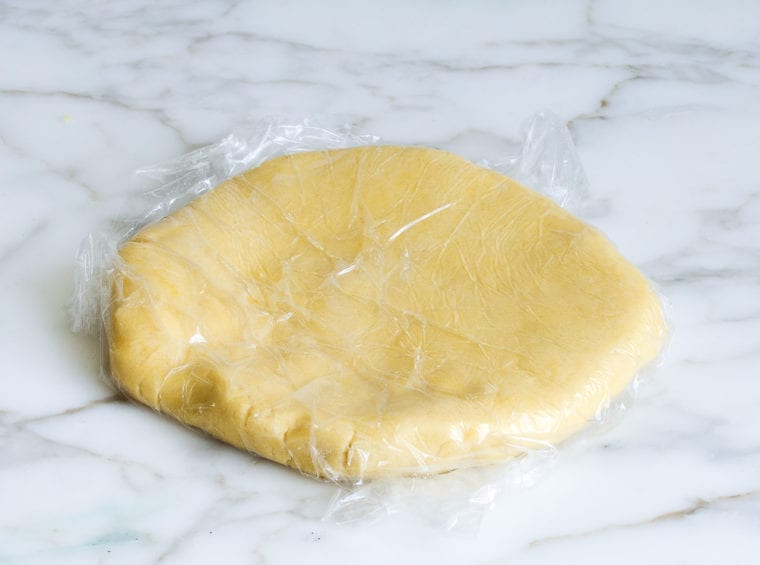
Lightly spray a 9.5-inch tart pan with a removable bottom or a 9-inch pie shell with nonstick cooking spray with flour. Place the chilled dough inside the pan. Pinch off pieces of dough and press them against the sides of the pan to reach about 1/8-inch thick and about 1/8 inch above the rim.
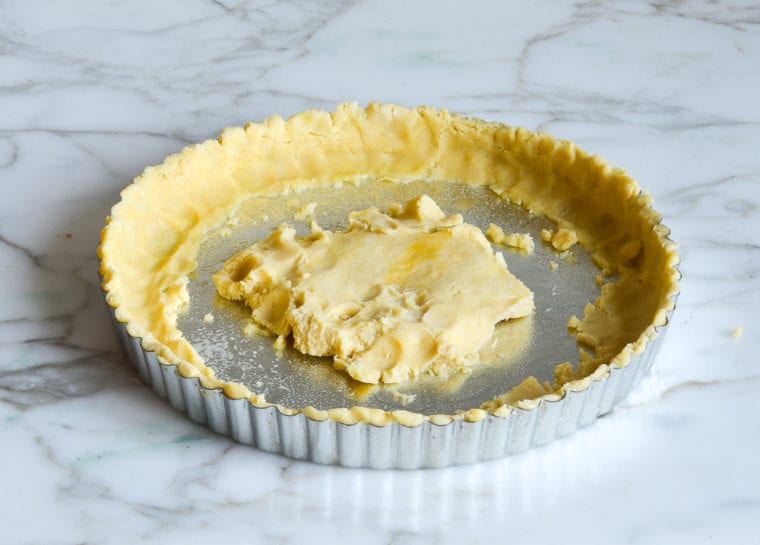
Using the heel of your hand, press the rest of the dough evenly into the bottom of the pan. It will look like a mess, and it may seem like you won’t have enough dough at first, but have faith, it will come together.
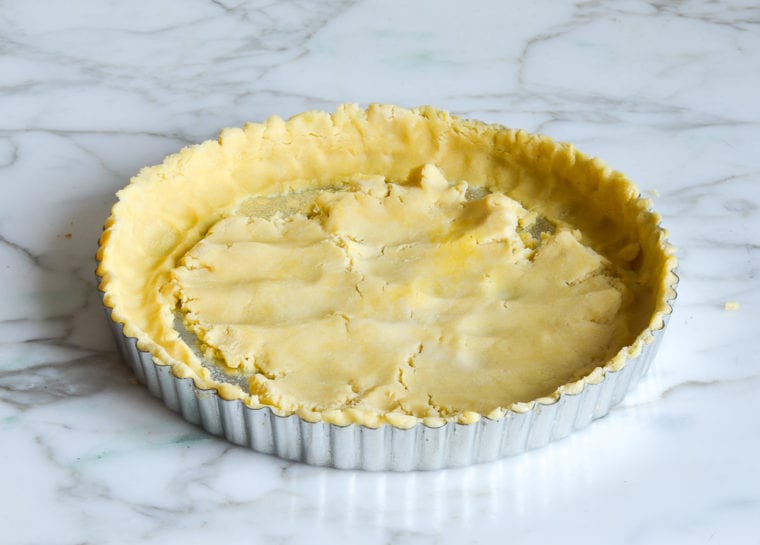
Be sure there are no seams in the dough, and press it squarely along the corners where the bottom meets the sides to avoid extra-thick edges. Use a paring knife to trim the top edge of the dough so it is even with the rim of the pan. Cover with plastic wrap and place in the freezer for about 30 minutes to chill.
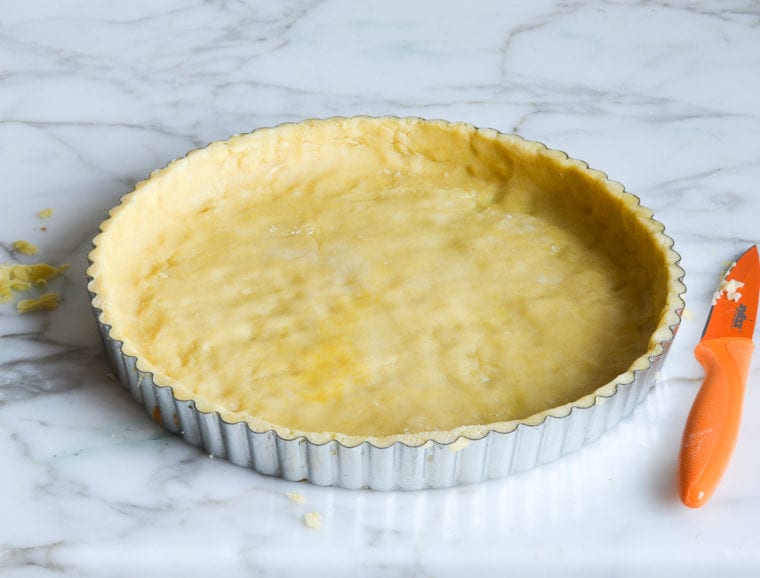
Preheat the oven to 350°F. Place the chilled pâte sucrée on a baking sheet (for easy handling).
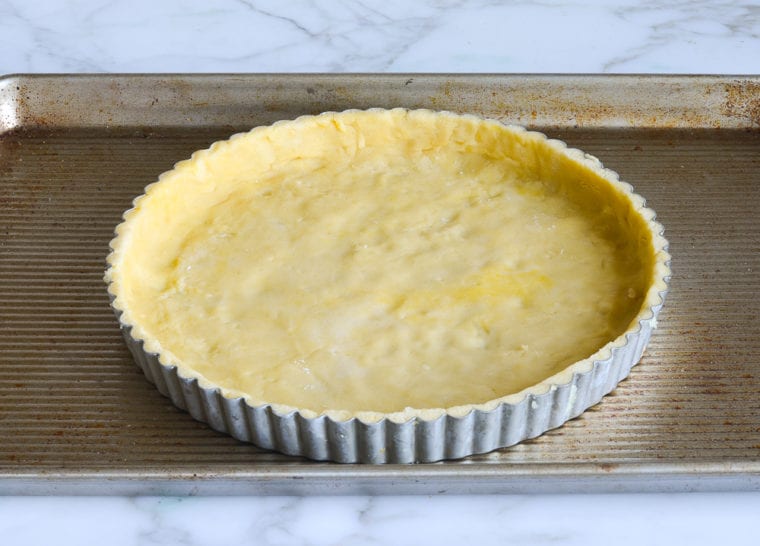
Bake for 23 to 26 minutes, or until lightly golden.
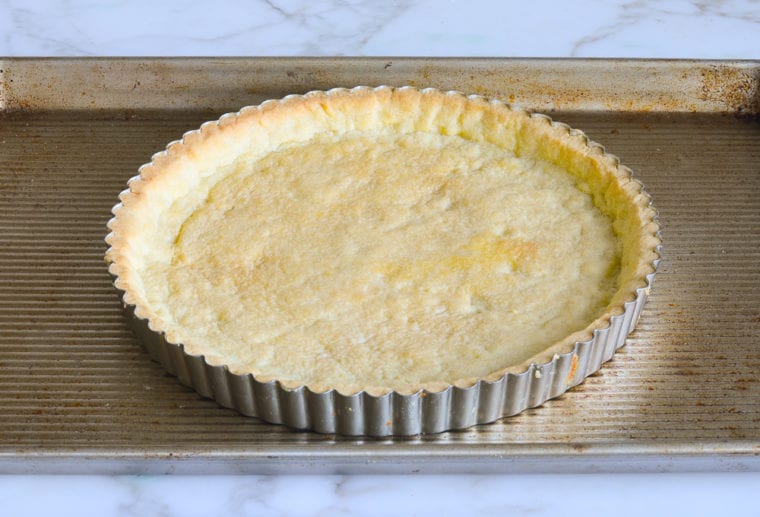
Let cool to room temperature.

You May Also Like
Pâte Sucrée (Sweet Tart Dough)
A pâte sucrée is a crisp yet tender pastry crust that is slightly sweet. It maintains its shortbread-like texture when chilled, which makes it ideal for tarts that require refrigeration.
Ingredients
- 1 stick (½ cup) unsalted butter, at room temperature
- ⅓ cup sugar
- ¼ teaspoon salt
- 1¼ cups all-purpose flour, spooned into measuring cup and leveled-off
- 1 egg yolk
- Nonstick cooking spray with flour, for baking
Instructions
- In a stand mixer fitted with a paddle attachment, cream the butter, sugar, and salt on medium speed until pale and creamy, about 2 minutes. Scrape down the sides and bottom of the bowl with a rubber spatula. Add the flour and mix on low speed for about 30 seconds, until the flour is incorporated. The mixture will look like wet, clumpy sand. Add the egg yolk and mix on low speed until the yolk is evenly incorporated and the dough is clumpy, about 30 seconds. Using your hand, lightly knead the dough into a ball inside the bowl. Remove the dough from the bowl, press it into a 6-inch disk, wrap it tightly in plastic wrap, and let it rest in the refrigerator for about 30 minutes. (The dough can be tightly wrapped in plastic and stored in the refrigerator for up to 5 days or in the freezer for up to 3 months. If frozen, thaw it in the refrigerator overnight before using.)
- Lightly spray a 9.5-inch tart pan with a removable bottom or a 9-inch pie shell with nonstick cooking spray with flour. Place the chilled dough inside the pan. Pinch off pieces of dough and press them against the sides of the pan to reach about ⅛-inch thick and about ⅛ inch above the rim (you'll trim the top later). Using the heel of your hand, press the rest of the dough evenly into the bottom of the pan. (It will look like a mess, and it may seem like you won't have enough dough at first, but have faith, it will come together.) Be sure there are no seams in the dough, and press it squarely along the corners where the bottom meets the sides to avoid extra-thick edges. Use a paring knife to trim the top edge of the dough so it is even with the rim of the pan. Cover with plastic wrap and place in the freezer for at least 30 minutes to chill.
- Preheat the oven to 350°F and set an oven rack in the middle position.
- Place the chilled pâte sucrée on a baking sheet (for easy handling) and bake for 23 to 26 minutes, or until lightly golden. Let cool to room temperature on a wire rack.
Nutrition Information
Powered by ![]()
- Per serving (10 servings)
- Calories: 169
- Fat: 10 g
- Saturated fat: 6 g
- Carbohydrates: 19 g
- Sugar: 7 g
- Fiber: 0 g
- Protein: 2 g
- Sodium: 60 mg
- Cholesterol: 39 mg
This website is written and produced for informational purposes only. I am not a certified nutritionist and the nutritional data on this site has not been evaluated or approved by a nutritionist or the Food and Drug Administration. Nutritional information is offered as a courtesy and should not be construed as a guarantee. The data is calculated through an online nutritional calculator, Edamam.com. Although I do my best to provide accurate nutritional information, these figures should be considered estimates only. Varying factors such as product types or brands purchased, natural fluctuations in fresh produce, and the way ingredients are processed change the effective nutritional information in any given recipe. Furthermore, different online calculators provide different results depending on their own nutrition fact sources and algorithms. To obtain the most accurate nutritional information in a given recipe, you should calculate the nutritional information with the actual ingredients used in your recipe, using your preferred nutrition calculator.

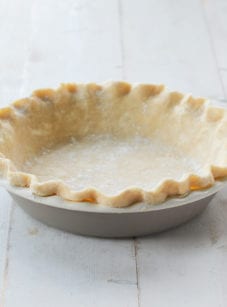

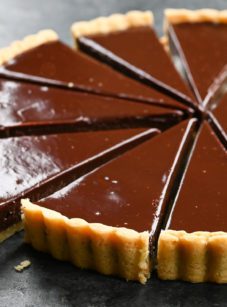
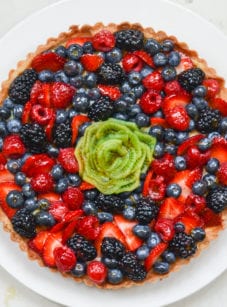
This crust is scrumptious! Easy to make too, love the pat in the pan, and no need for blind baking. WoW! Thank you for sharing👍👍👍
It was my first time making a tart, and I was really surprised by how well this turned out since I didn’t know what I was doing! I worried I made the sides of the tart too thick and didn’t think I was doing a good job of pressing the dough evenly into the bottom of the pan. Other recipes I saw call for docking, so it seemed like magic when the pate sucree didn’t shrink or puff up. My final tart looked and tasted great. Thanks for the recipe!
Hello, and thank you for the recipe.
Does the reference to freezing half refer to raw or baked dough?
If raw, would it work to freeze it already pressed into the pie pan?
In the past, I’ve frozen my pie dough (all butter; but using ice water instead of egg yolk, and much less sugar) in a 6″ disc, but with the change of ingredients perhaps there’s less danger of its drying out. Already pressed into the pan would be a welcome step saved Thanksgiving week, when I’d rather focus on friends and family.
Hi Ellen, I would freeze the dough raw, and it’s fine to freeze it already pressed into the pie pan. (If it’s a glass pie pan, let it thaw in the fridge before baking – going from freezer to oven may cause the glass to shatter in the oven.)
I made this and this was the first time I was able to blind bake a crust without it sliding down the edge. Thanks.
Im trying to make this right now. I used room temp butter and followed instructions as far as how long to mix and such but dough is so wet I can’t even knead it. Help?
Hi KL, If you measured everything properly, I would pop it in the fridge til it’s firm enough to handle.
Thank you for the reply! I was able to work with it even though it didnt feel right. But after baking it pretty much turned into a flat piece— the sides shrunk and the bottom puffed up. And yes everything was measured properly including spooning the flour and all that. I wonder what happened?
Hi KL, It’s kind of a mystery. What brand of flour did you use? Did you use butter (as opposed to something like margarine)?
Mine did the same, the sides shrunk down and the middle puffed up a bit. It could be because when I put the pan in the freezer before baking, I pushed up on the center piece by accident and the dough moved around a bit. What do you think?
Hi Michael, sorry you had a problem with this! Yes, I do think pushing up on the center would have caused it as that may have unanchored the dough from the sides of the pan.
Hi Jenn,
I am in the process of making this dough but I don’t have cooking spray with flour. What will be the difference if I use straight cooking spray-no flour?
Hi there, You can use your cooking spray and then just dust the pan lightly with flour.
Hi Jenn,
The fresh fruit tart was delicious. My husband raved about the custard. The pate sucree came out great; pretty as a picture, and so delicious. It stayed crisp in the refrigerator until the tart was gone.
Thanks for all your great recipes. I’ve gotten rave reviews for your key lime pie.
The recipe states 10″ tart pan, but the link is to a 9.5″ pan. Please confirm which pan is best. This is my mother’s favorite dessert, so I want to get it perfect.
Thanks!
Hi Trish, either one will work perfectly fine. Hope your mom enjoys!
I used this dough for the fruit tart on this site and it was perfectly tender and crisp as described. I have always struggled with rolling out pate sucree dough, so the press-in method worked much better for me. My tart was beautiful!
Just used this recipe to make peaches and cream tarts, and it was fantastic! The recipe filled four 4.5″ mini tart pans exactly. Because they were smaller, I checked them around 20 minutes, and they were nicely golden brown. Thank you! Your recipes have NEVER let me down… I often check your website first when I need a particular baking recipe because I know it will be a winner. 🙂
Hi Jenn! So excited to try this recipe for the 4th! If I bake the crust tonight but plan to assemble tomorrow, should I refrigerate the crust overnight or leave it out on the counter? Thanks for your help!
Hi Jo, You could honestly go either way, but I’d probably just leave it out on the counter. Please LMK how it turns out!
How much is one stick of butter in cups?
Hi B, 1 stick is the equivalent of 1/2 cup. 🙂
Delicious! I know I did something wrong because I used a pie plate and the crust stuck very badly to the plate. It still tasted amazing but my tart was a crumbled mess. Any idea what happened? Thanks for a delicious recipe!
I’m sorry you had a problem with the crust sticking! Did you generously treat it with nonstick spray?
I had the same problem. I did spray generously and asking the side as well as sprinkled flour. However, it’s stuck and breaking apart whenever I try to loosen it. Tastes good though